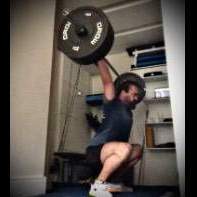Porque Utilizar Uma Ampla Faixa De Reps E Como Selecionar Os Exercícios Para Otimizar A Hipertrofia
-
Quem Está Navegando 0 membros estão online
- Nenhum usuário registrado visualizando esta página.
-
Conteúdo Similar
-
- 118 respostas
- 47814 visualizações
-
Diário - Dieta Intuitiva e Treinamento TDNE 1 2 3 4 68
Por william.fortunato,
- bodyweight
- dietaflexivel
- (e 3 mais)
- 673 respostas
- 49312 visualizações
-
- 2 respostas
- 1131 visualizações
-
- 1 resposta
- 642 visualizações
-
- 4 respostas
- 802 visualizações
-




.thumb.jpeg.590e6ea02eb17bbc51fb42e9868dfd16.jpeg)
.thumb.jpg.e7f37b14c5a3fd192c0c2c5aa03103b4.jpg)

Posts Recomendados
Crie uma conta ou entre para comentar
Você precisar ser um membro para fazer um comentário
Criar uma conta
Crie uma nova conta em nossa comunidade. É fácil!
Crie uma nova contaEntrar
Já tem uma conta? Faça o login.
Entrar Agora